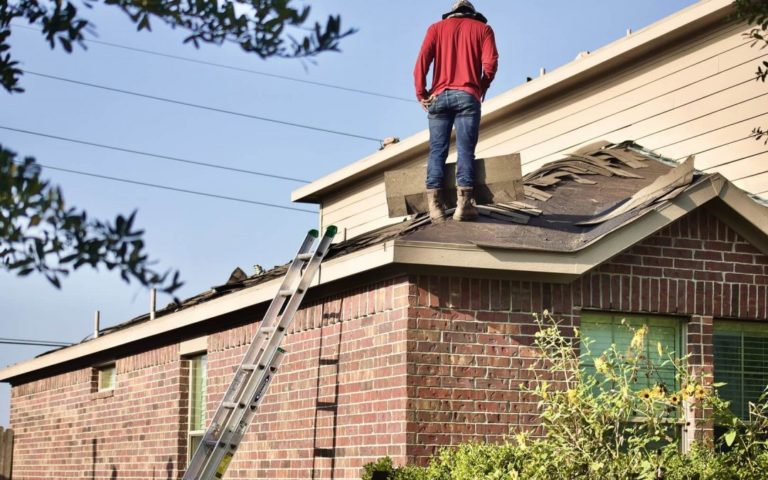
Patch or Replace? The Pros and Cons of Roof Repair
When you own a home, you’re probably familiar with the phrase “roof over your head.” The roof is one of the most important parts of any house—it protects you from rain and snow and gives your home that signature look. But what happens when it needs repairs? Should you patch it up or replace the entire thing? Let’s explore the pros and cons of roof repair.
What is roof patching and why is it necessary?
Roof patching involves repairing small areas of damage on a roof. These repairs typically involve replacing missing or damaged shingles or tiles, sealing gaps between shingles or tiles, filling cracks in the flashings around vents or chimneys, and repairing seams between two sections of a flat roof. It’s important to note that this type of repair does not involve replacing an entire section or large portion of a roof; instead, it’s focused on small areas where there are minor damages or leaks.
Roof patching is necessary because even minor damage can lead to bigger problems down the road if left untreated. For example, if water starts leaking into your home through a crack in your flashing around your chimney, it could cause major water damage over time if not fixed quickly. In addition, small patches aren’t as effective at keeping out moisture as larger repairs are, so even if you don’t have any current issues with leaks or water damage yet, patching up those areas now could prevent future problems from occurring.
When is it best to hire a professional for roof repair services?
Choosing a professional for your roof repair services provides several benefits that make it worth the cost. Professionals have access to specialized tools and materials needed for quality workmanship and often offer guarantees on their workmanship, so you can gain deeper peace of mind that your repair will last through severe weather conditions. Furthermore, professionals know exactly what they’re doing—so you don’t have to worry about climbing up onto your roof and potentially damaging it even more while trying to fix the problem yourself!
How much do roof repairs cost on average?
The exact cost of repairing your roof depends on several factors, such as the materials used, the size of the area being patched, and the overall condition of your roof. Generally speaking, however, basic repairs typically start around $350 and into the thousands. For example, fixing broken shingles would be on the lower end of that range while patching a large section of missing shingle tiles or replacing a valley would be much more expensive. This estimate does not include any additional labor costs like removal or disposal fees.
Patching Pros & Cons
One of the biggest advantages of patching your roof is cost. It’s almost always cheaper to fix small problems as they arise than it is to replace an entire roof in one go. Additionally, if you are able to patch up any holes or cracks quickly enough (before water starts leaking through!), then you may be able to avoid more serious water damage down the line.
Another advantage is convenience. If you hire a professional for the job, patching usually takes only a few hours! No need for loud construction noises or messes in your living room—just get it done as soon as possible and move on with life as usual. Plus, if done correctly, patches can even add extra years to your current roof’s lifespan!
Patching isn’t always ideal… For one thing, it can be difficult to match the existing material exactly unless you buy an entire new roll of shingles (which might not make sense financially). Plus, finding all the holes can be tricky—it may require getting up on a ladder or climbing onto your roof itself… which isn’t something we recommend doing alone! Not only is there a risk of personal injury but depending on how old your roof is there could also be hidden structural issues lurking beneath the surface that could cause further damage down the line if left untreated.
What is roof replacement and why is it necessary?
Roof replacement is exactly what it sounds like—a process of replacing an existing roof with a new one. The reasons for needing a roof replacement can vary greatly, but generally speaking, it’s due to damage caused by age or wear and tear over time. Other factors can include weather-related issues such as hail or wind damage, issues with improper installation, or even just general deterioration from being exposed to the elements for too long.
Roof replacement becomes necessary when repairs no longer cut it. If your roof has suffered extensive damage due to storms or just general wear-and-tear over time, then repairing it won’t be enough to protect your home from the elements anymore. That’s why it’s important to pay attention to telltale signs that your roof may need replacing, such as missing shingles or discoloration of the material.
How do you know when it’s time to replace your roofing system?
There are several signs that indicate when it’s time for a roof replacement. These include things like missing shingles or tiles, leaking roofs, sagging areas on your roof decking/underlayment (the material between your roof and attic), and even moss growing across your shingles. If any of these signs are present on your roof then it may be time for a replacement.
What should you expect during the replacement process?
Before the Works Begins: The first step in replacing your roof is to hire a professional roofer. It is best to get multiple quotes and references before making a decision. After you have made your decision, the roofer will come out and inspect your roof and provide an estimate for the project. Once everything has been approved, they will provide you with a date for when they plan on starting work on your roof. On that day, they will arrive with their supplies and equipment ready to go!
During the Work: During the replacement process, you should expect some noise as well as a lot of foot traffic on your property. Additionally, workers may be coming in and out of the house during this time – so make sure to keep any pets away from them. Also, due to safety regulations, it is highly recommended that no one be present during the actual installation process – so make sure someone else can watch over things while the workers are doing their job!
After Everything Is Complete: Once everything is finished, you should expect a thorough inspection from both yourself and your contractor. This includes checking for any damage or imperfections that occurred during installation as well as ensuring that everything looks up-to-par according to local building codes. After everything has been approved, then it’s time for you to enjoy your new roof!
Replacing Pros & Cons
Replacing your home appliances can be a great way to update their look and feel without breaking the bank (well, maybe not breaking it too much). If you want to give your kitchen or laundry room an aesthetic upgrade, swapping out older appliances for newer models is one of the easiest ways to do so. Not only this, but new models often use far less energy than older ones and come with features that are designed to save you money over time. For instance, many modern washing machines have special settings for cold water washes that both save energy and maintain fabric integrity—a win-win!
Of course, there are always downsides to replacing aging home appliances as well. For starters, it can be expensive—especially if you want high-end models with all the bells and whistles. Not only this, but most new models don’t fit into existing spaces as easily as their predecessors did—which means they may need extra work done in order to fit correctly into your existing cabinet configuration or plumbing setup. And lastly, even though modern energy-efficient models have been around for years now, some people still prefer vintage units because of their unique design elements or classic look and feel.
Conclusion:
When deciding whether to patch or replace your roof it is important to consider both short-term costs and long-term benefits. If possible consult with a professional who can help assess which option would be best suited to your situation based on factors such as the age of current roofing material, budget constraints, and future plans for property ownership or sale. Ultimately making an informed decision based on careful consideration should help ensure that any repair project meets both immediate needs as well as anticipates long-term benefits for years ahead.
If you are a homeowner in the greater Houston area (and all surrounding counties, including Fort Bend, Brazoria, and Montgomery County), please contact us for a free roof inspection. We’d be glad to help.

